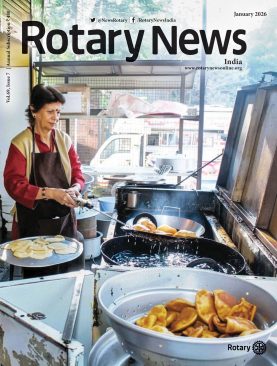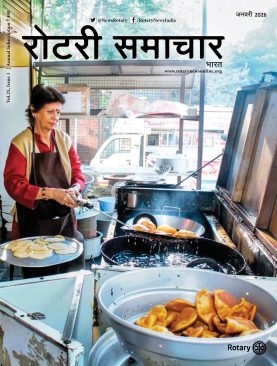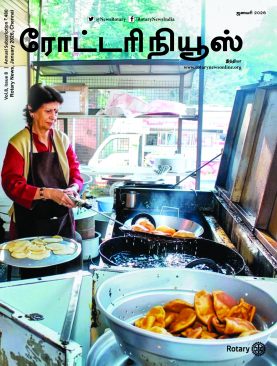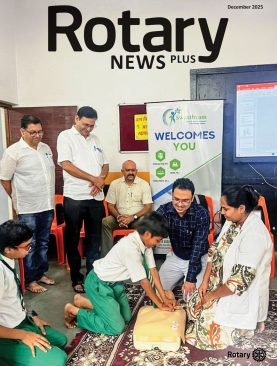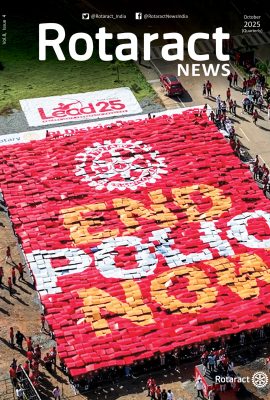Narasimha first heard the term “carbon footprint” while watching a street play performed by students from the Interact Club of Samskar School. The play, part of an initiative by RC Hyderabad Legends, RID 3150, raised awareness about the benefits of LPG iron boxes over traditional coal irons.

Narasimha lives in a makeshift tent inside an apartment complex in Hyderabad. He irons clothes for the residents during the day and works as watchman at night. For years, he had been using a traditional coal iron box, which took one and a half hours to heat up. This meant he had to iron clothes in large batches without breaks, leading to late lunches and skipping dinner. “I spent ₹4,000 every month to buy charcoal and could barely make ends meet,” he says.
The street play explained that “a carbon footprint is the amount of pollution we make from using electricity excessively, driving cars and other vehicles, or burning coal. It showed how 5,000 iron vyaparis in Hyderabad burned 300 metric tonnes of coal monthly, leading to severe environmental impact and health problems. The play got me thinking about the time it takes to heat the coal and the smoke I inhale,” Narasimha recalls.

When he heard about RC Hyderabad Legends offering LPG iron boxes that originally cost ₹4,500 each for ₹2,500, he decided to make the switch. Led by charter president Mohana Vamsi, the initiative distributed 200 LPG iron boxes to ironers in Hyderabad, with 60 sponsored by RID 3234 (Chennai). RCs Hyderabad Global Wizards and Smart Hyderabad helped identify beneficiaries and find sponsors for the project.
“The LPG iron box heats up much faster, saving me time,” says Narasimha. This allows him to start work early and serve more customers, increasing his daily output from 20 clothes to 50. “This additional productivity resulted in extra earnings of ₹200–250 per day, totalling about ₹5,000 a month,” he smiles. The transition to LPG “eliminated coal smoke, reducing health risks, and allows me to eat meals on time and take breaks when I want to. It is also lighter compared to the traditional iron box.”

“Apart from the environmental benefit, the cost efficiency of LPG was significant. The fuel cost per cloth dropped from ₹1.35 to 55 paise with LPG, reducing the beneficiaries’ monthly fuel expense to ₹1,650 and saving them ₹2,350 per month. We kept a tab on the earnings of the 200 iron vyaparis and were happy to see a 27 per cent rise in their monthly income,” says Vamsi.
Narasimha’s customers also noticed the improvement. “The LPG iron box has a temperature control knob, ensuring clothes do not overheat or get burned, a common issue with coal irons. The absence of coal sparks meant no more accidental holes in delicate fabrics. The quick heating feature of the LPG iron box allows me to handle last-minute emergency requests, making customers happy and earning their trust,” he says.
In a similar effort RC Bangalore Brigades, RID 3192, kicked off the new Rotary year with an identical initiative. They distributed two gas iron boxes to women who earn their livelihood as laundry ironers with roadside carts. This effort aims to ease their daily labour and reduce environmental impact by decreasing reliance on traditional charcoal irons.

